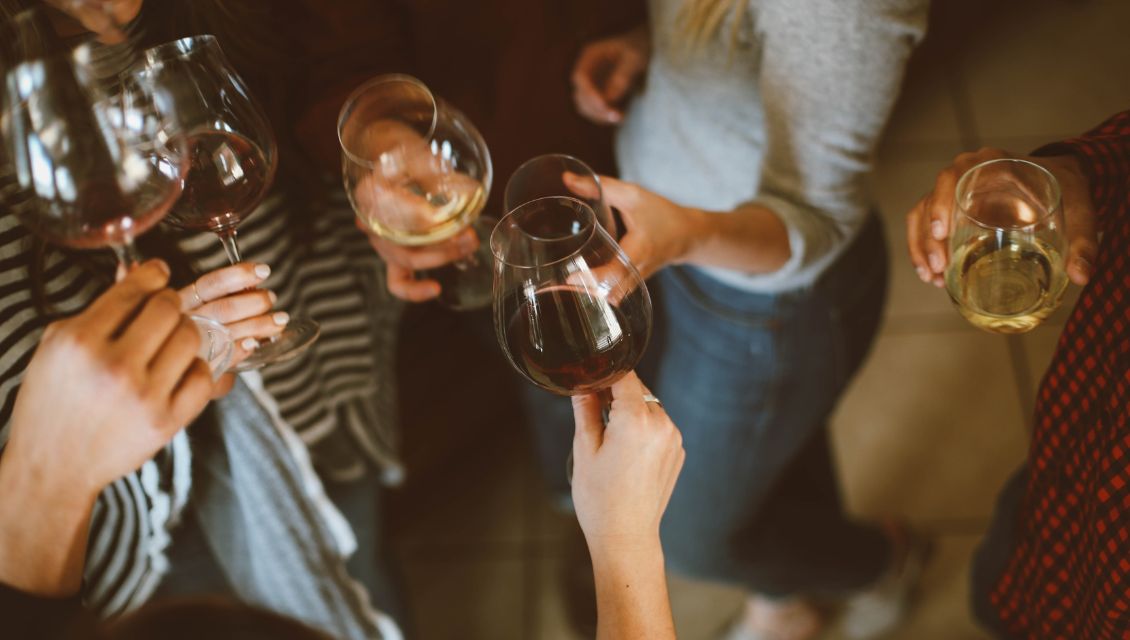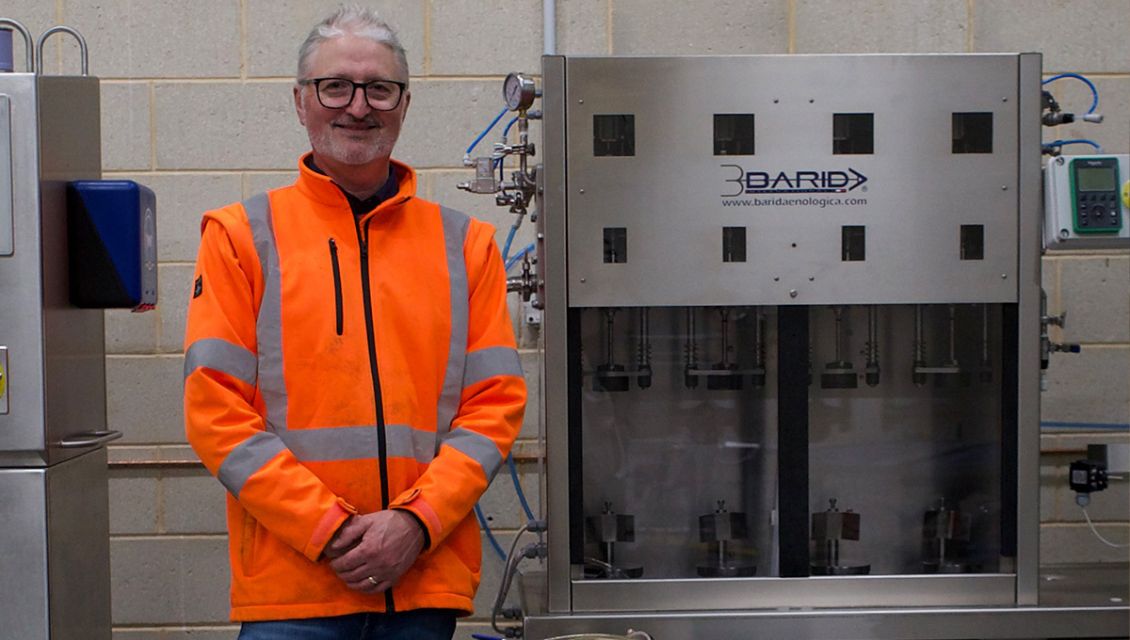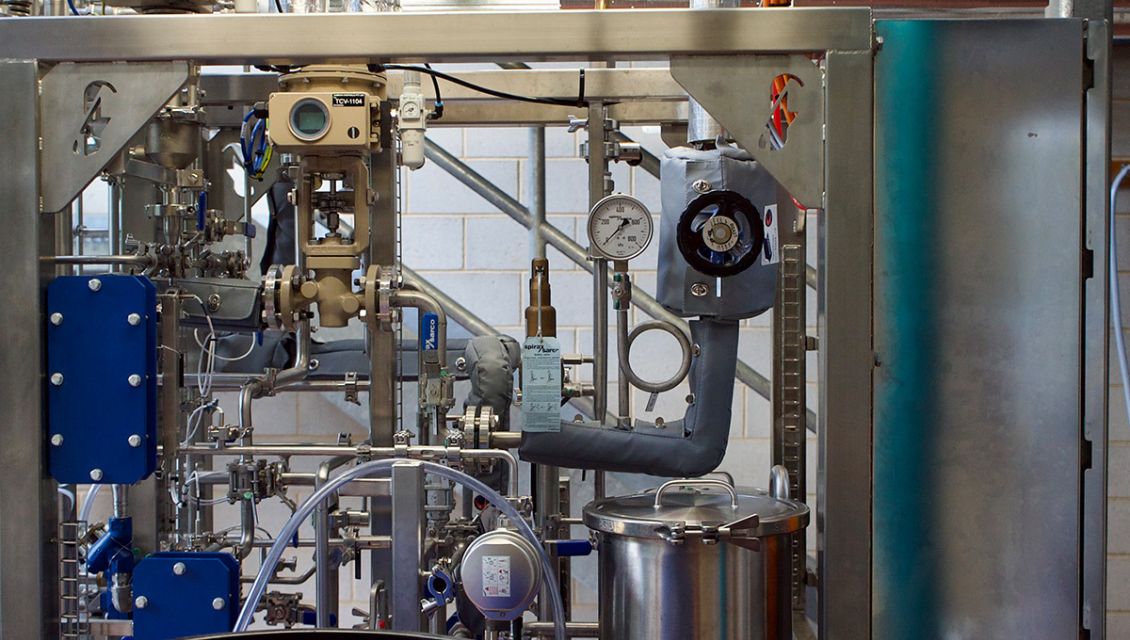
We’ve seen a rise in low and no-alcohol beers, but did you know this is also a growing trend in the wine industry? NOLO stands for no and low-alcohol wine, and it’s an area that’s booming as consumers increasingly seek alternatives to traditional alcoholic beverages.
Of course, with South Australia’s reputation for world-class wines, it’s no surprise the state is at the forefront of this wave. In early 2023, the world’s first small-scale research facility opened at the University of Adelaide.
The project is a partnership between the university, the Department of Primary Industries and Regions and The Australian Wine Research Institute, and has been supported with a $1.98 million investment from the Government of South Australia.
 What happens inside the NOLO research facility?
What happens inside the NOLO research facility?
It’s not quite the Willy Wonka Factory of wine, but for those of you who like to enjoy a good drop minus the alcohol, this is a pretty exciting development.
Located at the Waite Campus in Urrbrae, which is a leading education provider in winemaking and viticulture in Australia, the research facility aims to revolutionise the production of NOLO wines.
Paul Grbin, Head Winemaker at the University of Adelaide, says the development is significant for both research and product development.
“The goal is to provide not only a research facility to enable the science of making low and no-alcohol wines better, but also to allow wine businesses to develop their own products that suit their market segments,” he says.
Dr Mark Krstic, Managing Director of the Australian Wine Research Institute, says the facility will allow wine producers to develop new products in a low-risk environment.
“Once they find their perfect blend, they can scale-up to commercial production volumes, ensuring the quality of NOLO products in the market continues to improve,” he explains.
“The facility will also allow our researchers to develop new knowledge on how to make the best-tasting no and low-alcohol wines, making sure Australia is well-placed in the global beverage market as this category grows.”
Is there an appetite for wine without alcohol?
You betcha.
The global NOLO wine market is growing at more than 25 per cent per year, with the Australian market alone valued at around $51.6 million in 2020-21. Australia represents five per cent of volume and three per cent of value for the global NOLO wine market.
“No alcohol” refers to wines with alcohol content below 0.05 per cent, while “low” indicates alcohol content ranging from 0.5 to nine per cent. For reference, standard wines usually contain approximately 12 per cent alcohol.
This change to the industry means that those who are unable to consume alcohol, and health-conscious consumers seeking to reduce their alcohol intake, will now be able to continue to enjoy a tipple without compromising on taste and experience.
“They can still have a couple of glasses at lunchtime and be able to drive and not be under the influence,” Paul says. “It also enables people to be able to participate in having a glass of wine with a meal, where they might not normally because of cultural or health reasons.”
What about the taste?
Paul notes that when alcohol is removed from wine, it can significantly alter its taste. The new research facility aims to assist the local industry in creating better products that retain flavour.
“The ultimate goal is that we could put two glasses of wine side by side – one didn’t have alcohol in it or had lower alcohol, and the other had normal amounts – and you couldn’t really pick the difference. We’re not there yet, so there’s quite a bit of work to be done on trying to make that equivalence,” he says.
OK. It sounds a bit too good to be true. Where is it at?
The new facility will be used for its first clients sometime in June. Unlike commercial-scale equipment that requires a minimum 10,000 litres to pass through it, this facility enables small-scale product development trials using as little as 150 litres. It’s the first of its kind in the world for NOLO wines and is significant in reducing risks for small companies during the experimental stage.
At the heart of the facility lies the FlavourTech spinning cone column, regarded as the “gold standard” for NOLO wine production. Unlike traditional methods that involve high-temperature alcohol removal, which can adversely affect flavour, the spinning cone column allows alcohol removal at lower temperatures minimising the impact.
The facility offers on-site canning and bottling facilities, while the State Government is also subsidising usage costs for 15 days over the next three years per SA wine business. It takes products from a base material, right through to internal and consumer testing at a reduced cost.
Eloise Napoli, 23, first dipped into NOLO wine so she could enjoy a couple of glasses of wine on a night out without needing to fork out for an expensive ride home.
“It’s been a great alternative,” Eloise says.
“With there being a lower alcohol strength, it means I can join in with my friends for a few drinks, and then still be able to drive home after. I don’t have to pay for an expensive Uber trip home, and always feel great the next day too.”
Eloise says she’s excited to see what comes of the new facility and try alternatives that more closely mimics the taste of traditional wine.
The facility is open to wine businesses now. To learn more and register interest, visit www.pir.sa.gov.au/nolo
This story was written by Lara Pacillo and originally appeared on The Post - a media partnership between the Government of South Australia and Solstice Media to inform young South Australians about the policies that underpin issues affecting their lives.

